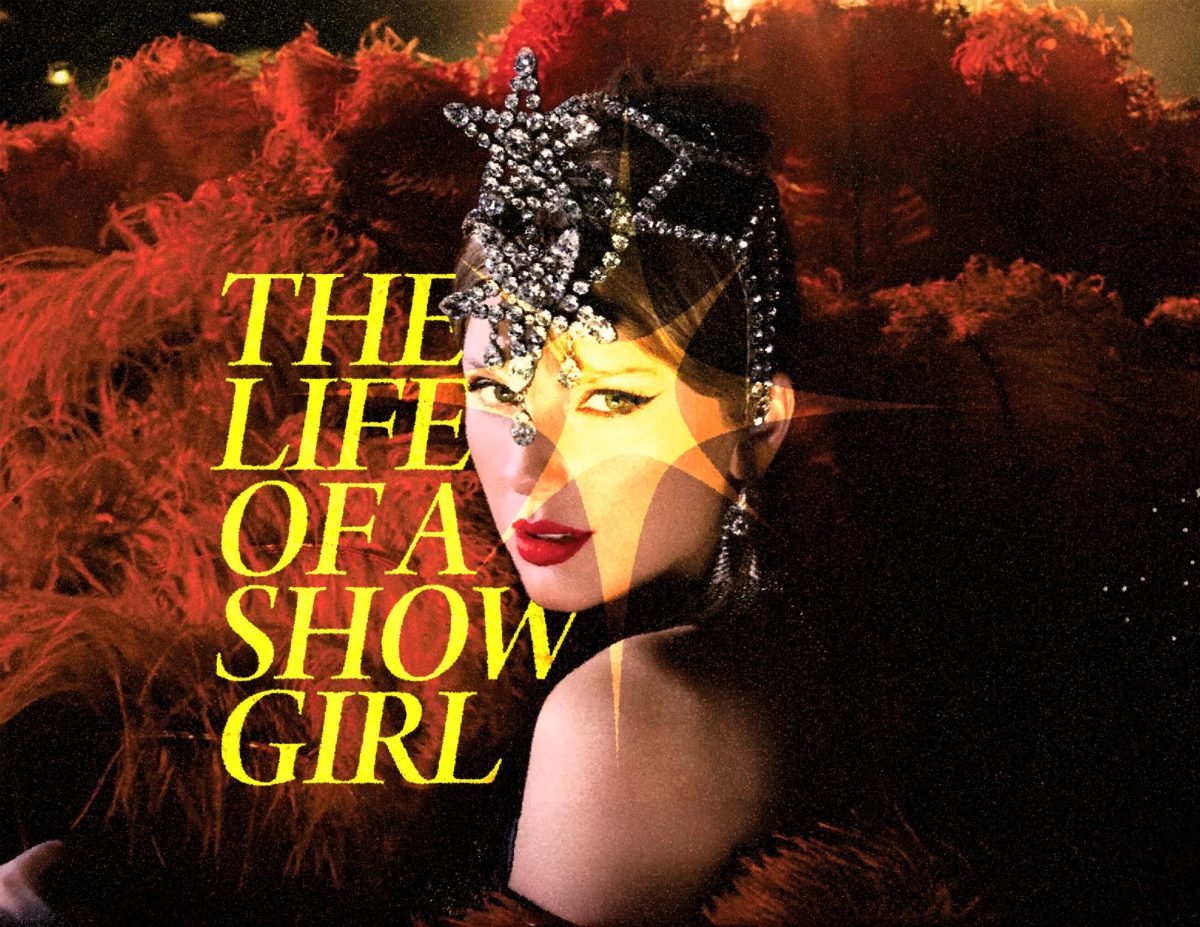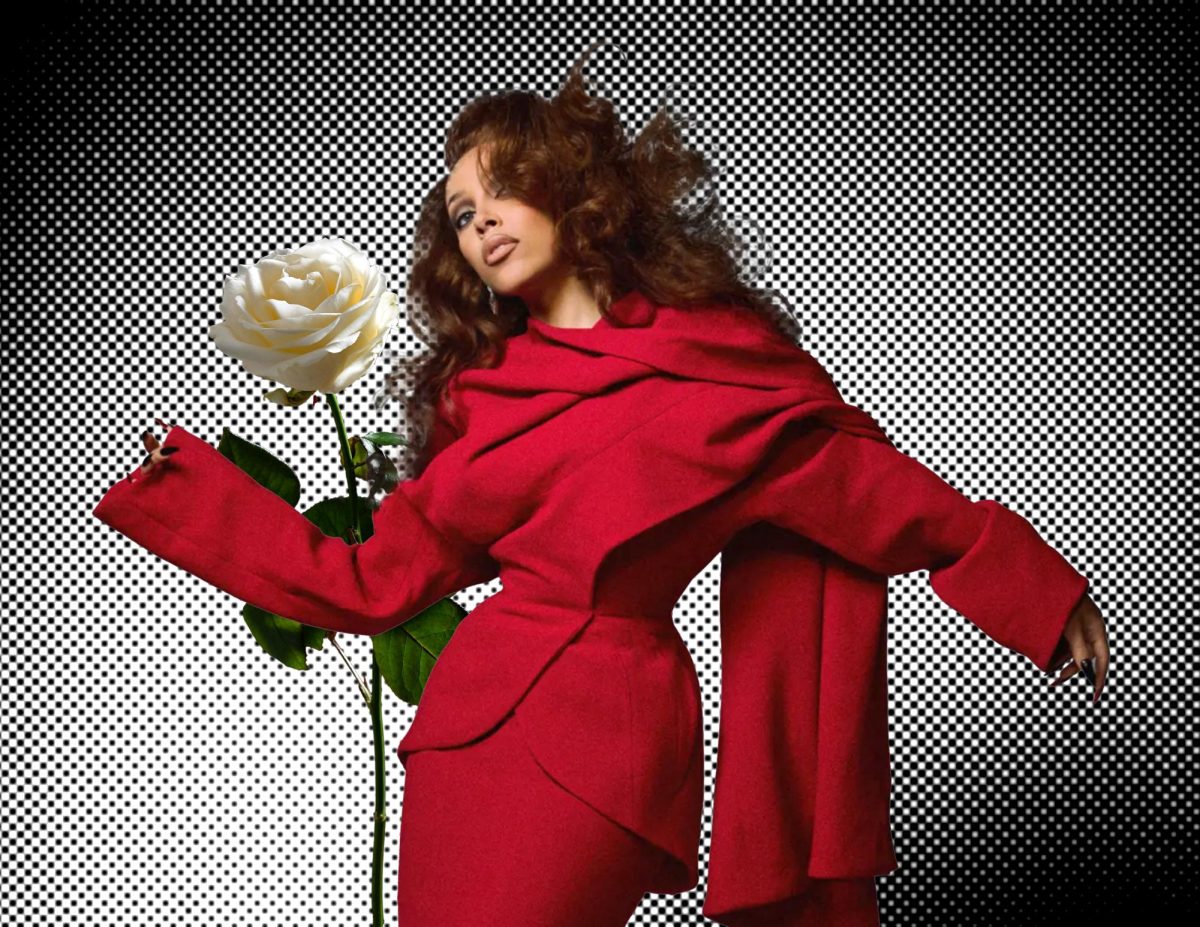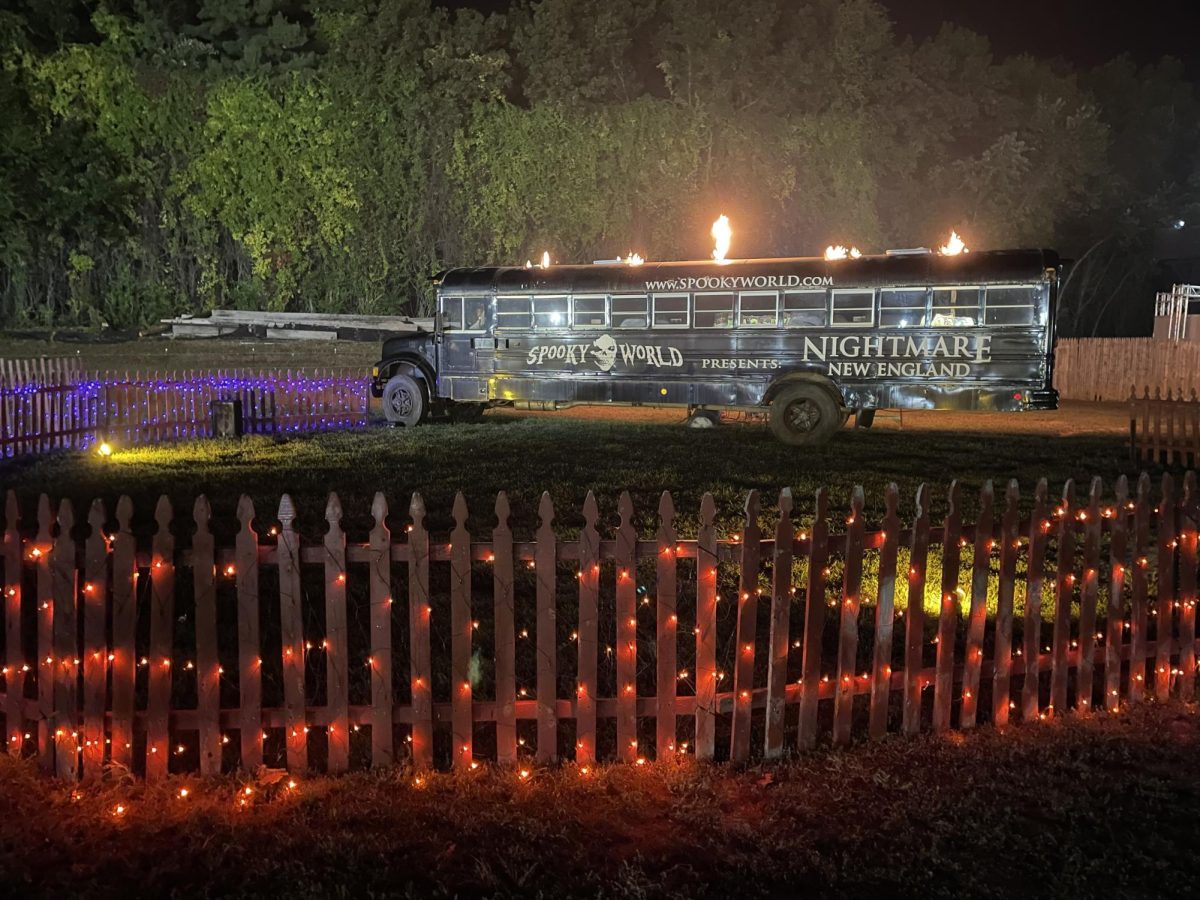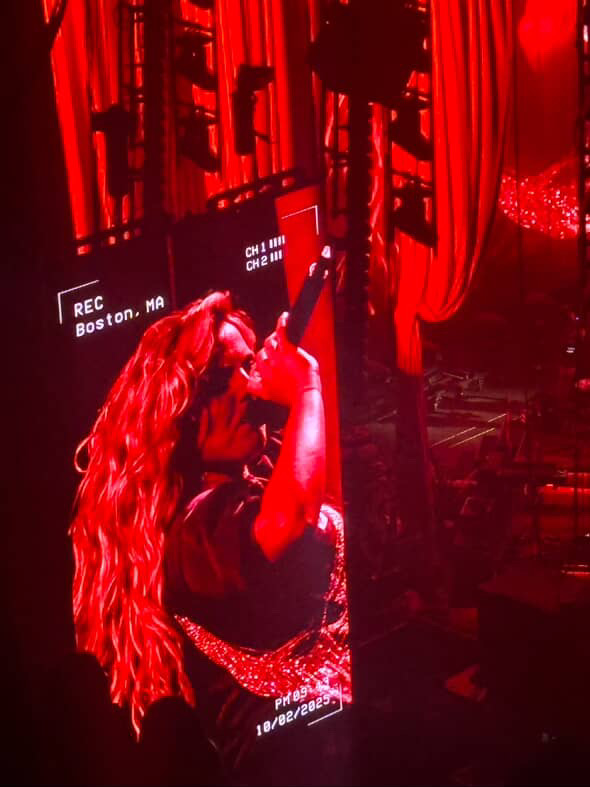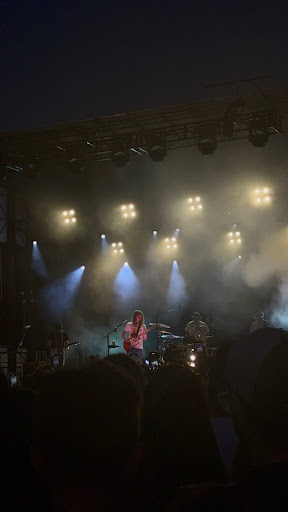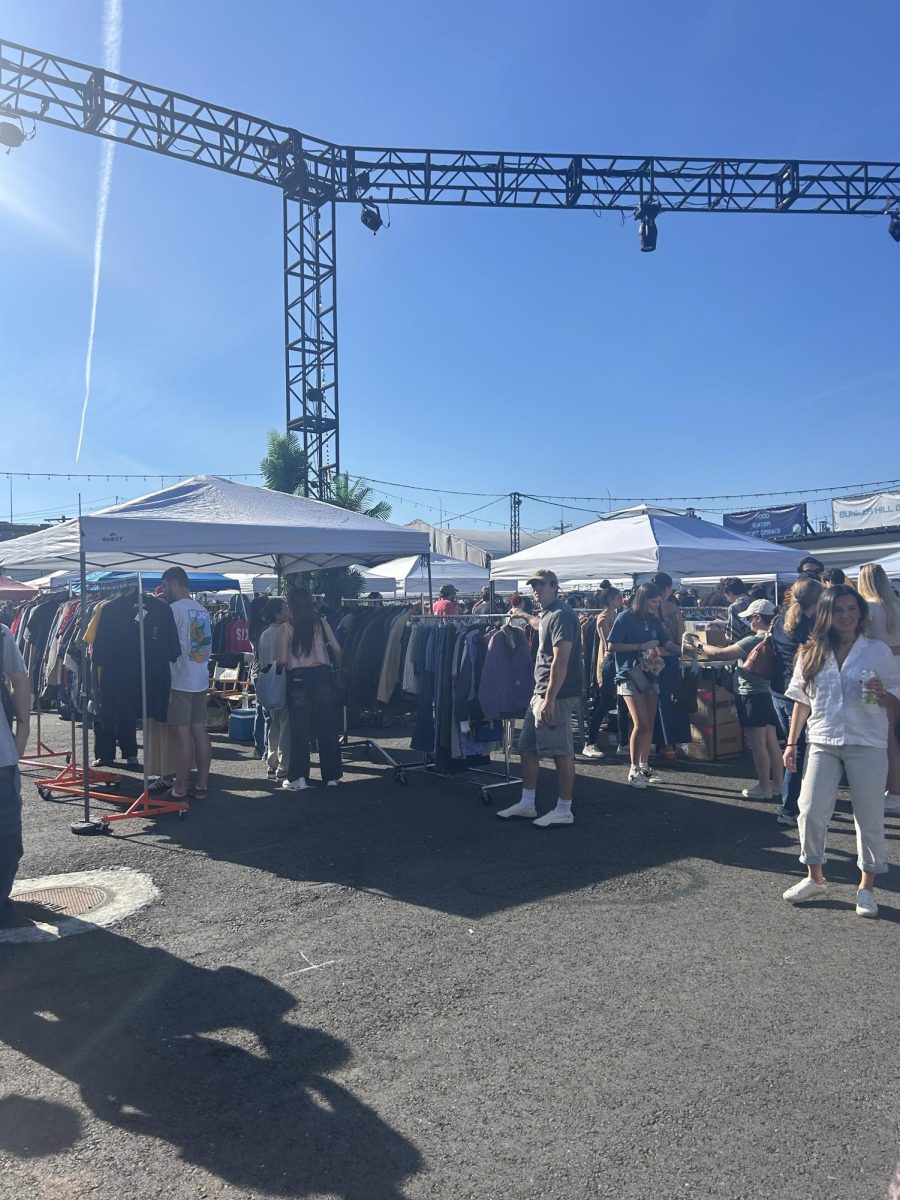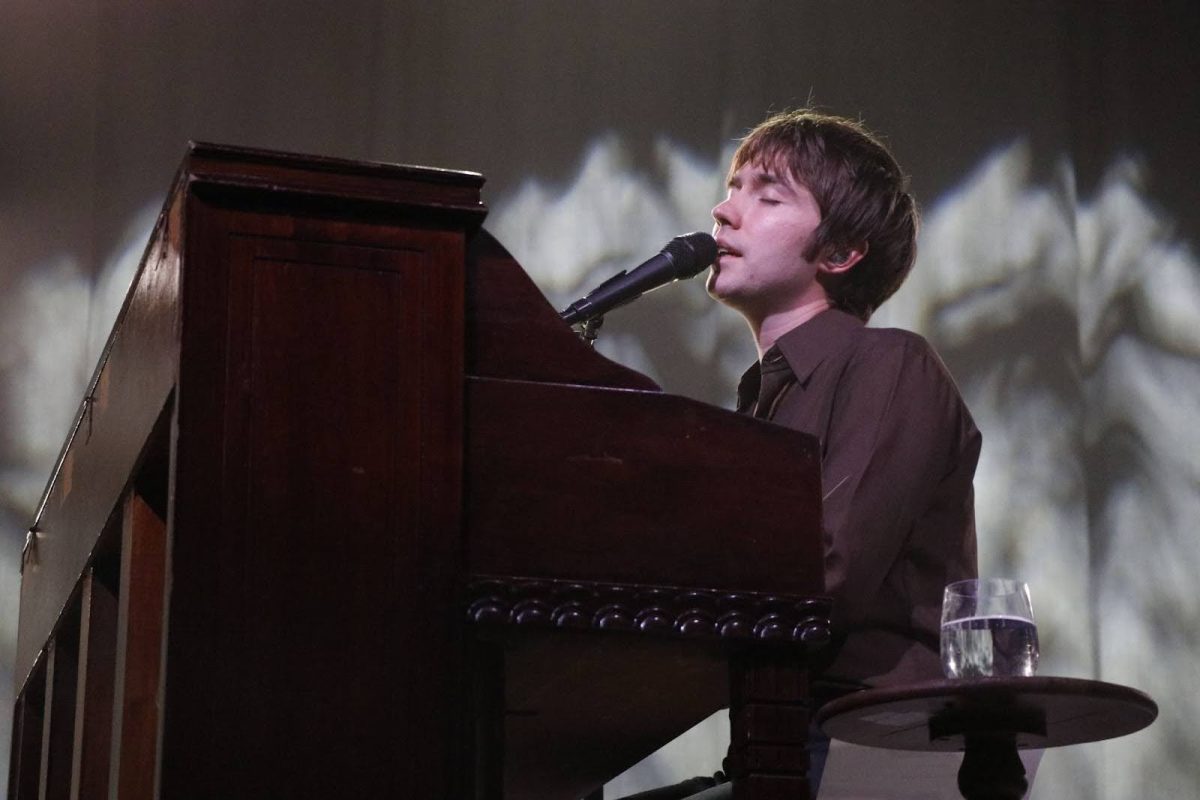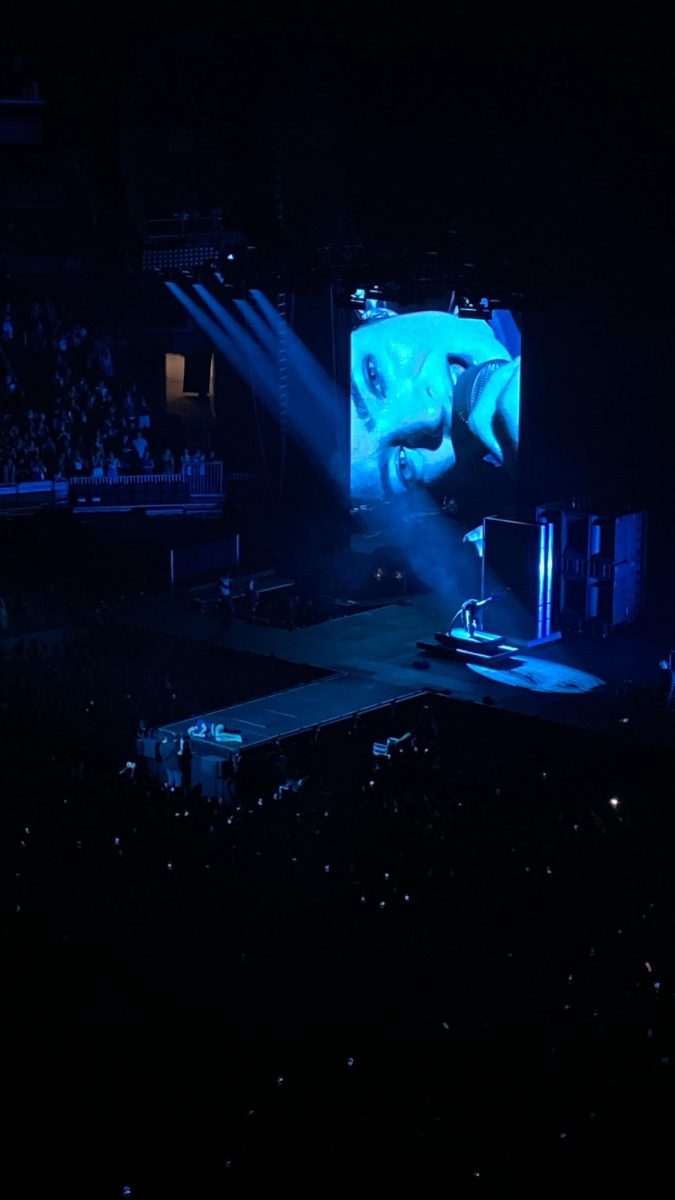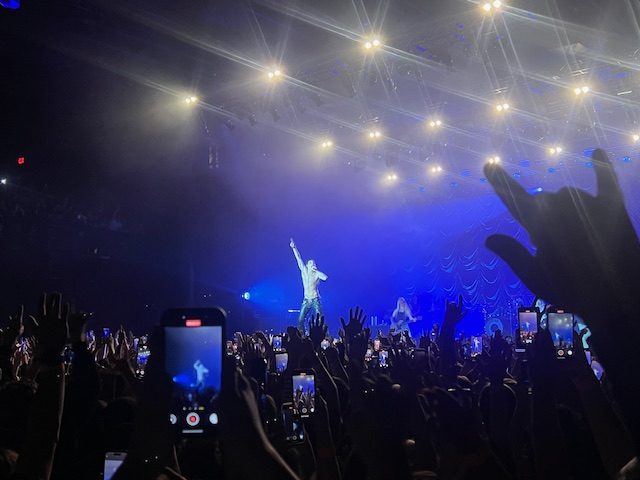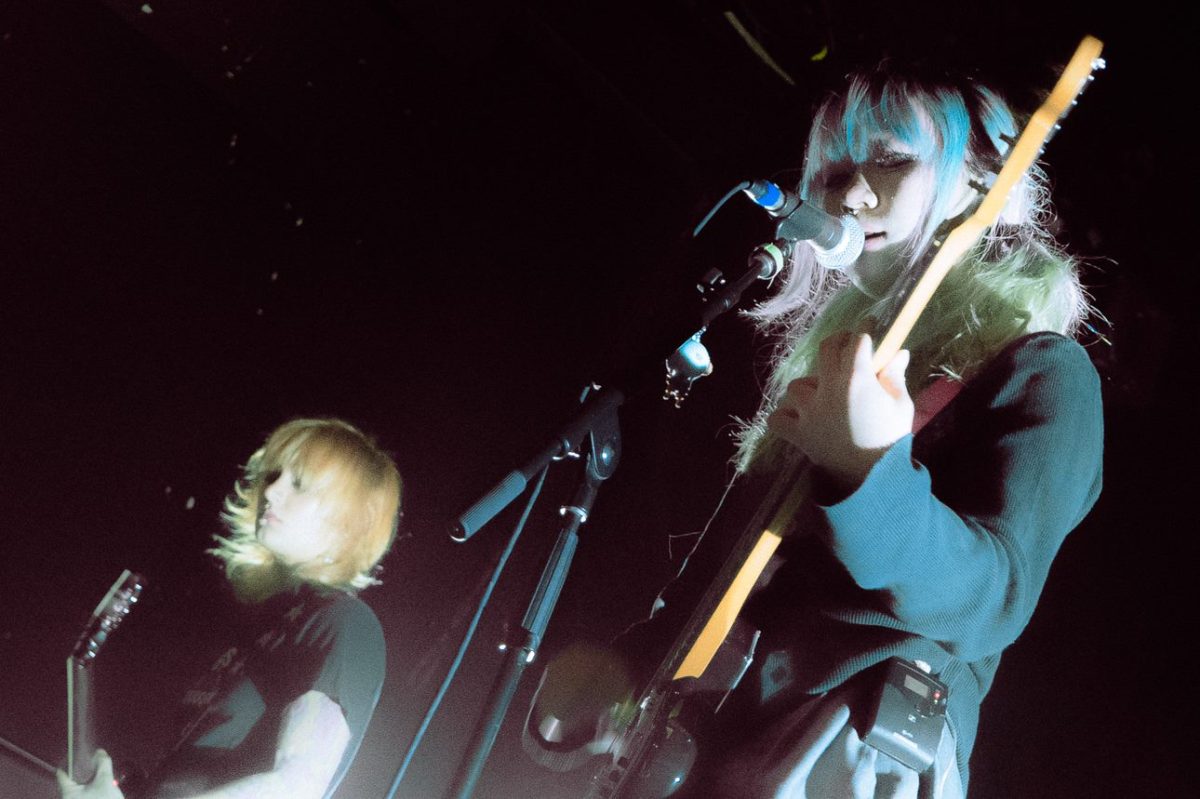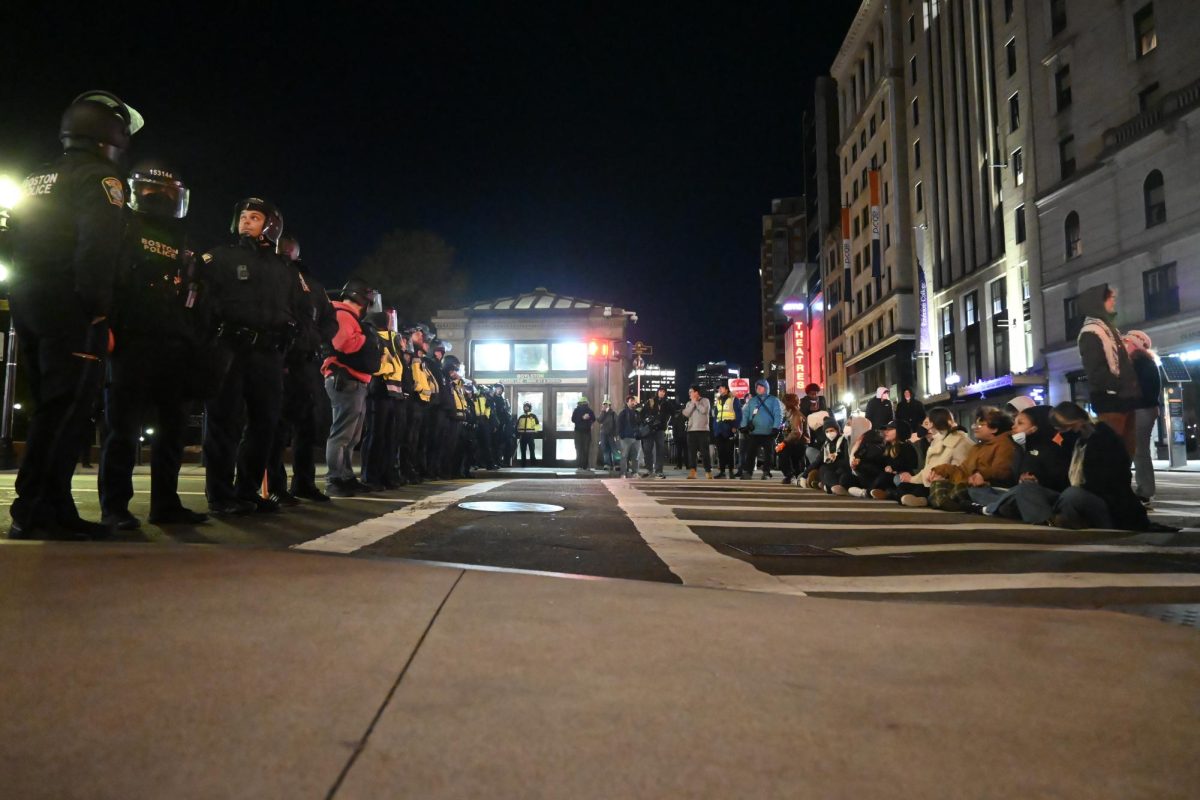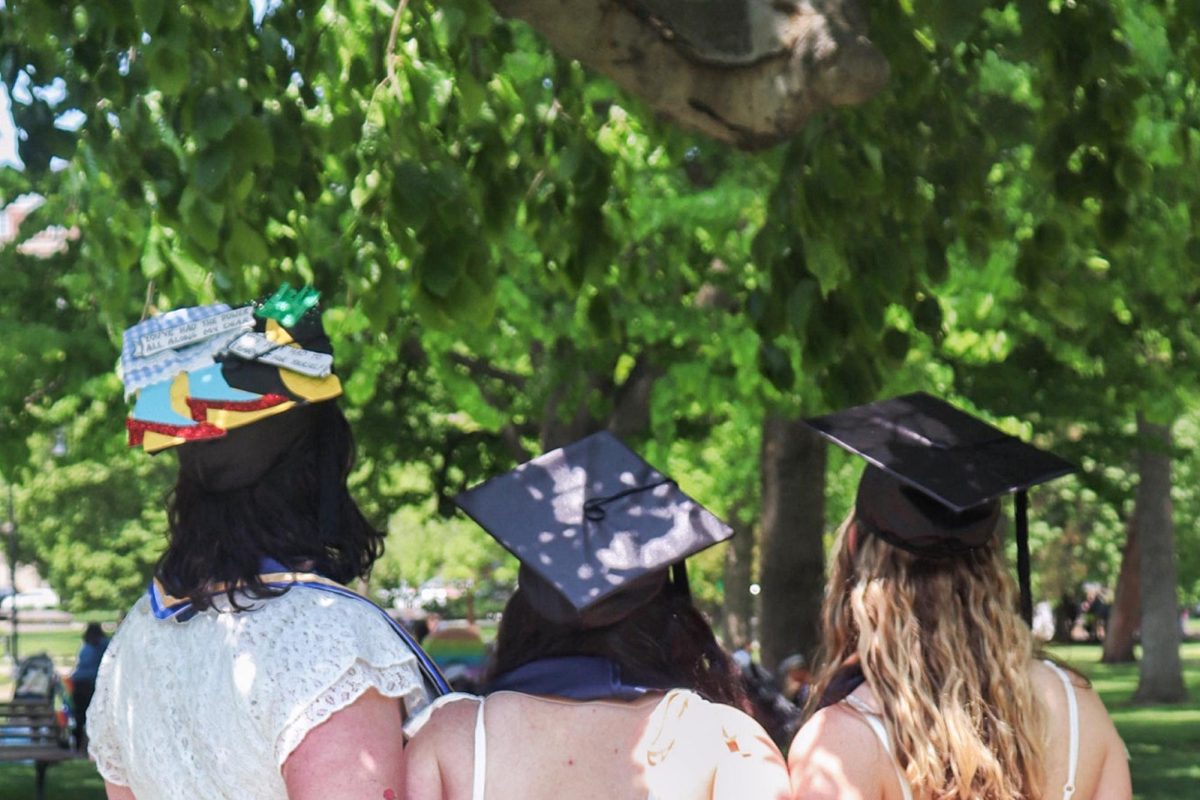By Maria Baluch
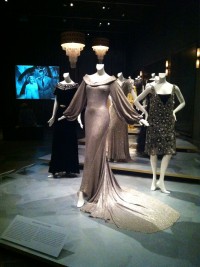
If you have ever dreamed of the stunning dresses and gowns worn by Hollywood actresses, now is your chance to see them up-close and in person. The Museum of Fine Arts has a new exhibit called “Hollywood Glamour: Fashion and Jewelry from the Silver Screen.”
As you open the double glass doors to the entrance of the exhibit, it’s suddenly as if you’re taken back in time to old Hollywood, a world of glamour and allure. Dimly lit, dark hues of grey painted walls and two golden crystal-tiered chandeliers hung on the center of the ceiling set a romantic and sophisticated mood.
The exhibit captures Hollywood glamour at its height with gowns and dazzling jewels from the 1930s and early 40s, Hollywood’s “golden age” of fashion. Costume designer Edith Head described the costumes and jewelry of the 30s and 40s as, “the luxury that existed before the era of budgets and economy.”
Fashion curator Michelle Tolini Finamore and jewelry curator Emily Stoehrer express that at the movies, people got a chance to escape from reality into worlds created by visionaries. Therefore, they wanted to present a “behind-the-scenes look at how Hollywood’s most glamorous designs contributed to its distinctive brand of escapist fantasy.” At the time, film stars’ lavish ensembles were the perfect antidote to the withdrawals of the Great Depression, “a taste of supreme luxury for the price of a movie ticket.”
The exhibit features 16 breathtaking dresses, which date from the mid 1920s to the late 1940s, incorporating the evolution of costume design from the early days of the silver screen, when actresses provided their own wardrobe to the rise of costume designers.
The first few gowns make you stare in awe with sparkling stones and bright, glittering fabric. The gown featured in the front is from the 1935 film, “Paris in Spring” designed by Travis Banton, one of the designers who started his own fashion line after the fame of his costumes. It’s a silver lamé crepe dress with full bishop sleeves, a round neckline and a small train.
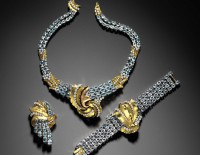
The short sleeve black silk velvet embroidered gown next to it is from the 1930 film “Inspiration.” Designed by Gilbert Adrian and worn by actress Greta Garbo, the gown featured a minimalist design with a touch of dramatic flare at the neckline, and on the sleeves with silver bugle and glass beads, crystals, rhinestones and metallic thread.
On the opposite side is a short dress, worn by Ina Claire at a time before the rise of the costume designer, when film studios required young actresses to source their own wardrobe. The elegant silk and black tulle flapper dress features an unstructured silhouette, exquisitely beaded surface and a plunging back, designed by none other than Gabriella “Coco” Chanel.
Behind is a champagne evening gown from the 1932 film “No Man of Her Own”, also designed by Banton. Worn by Carole Lombard, the reflective glass beads hugged her figure in shimmering light, adding sex appeal to the dress. In the movie, the garment symbolized her transformation from a librarian to a chic urban socialite. It’s a short sleeve, silk chiffon gown embroidered with glass beads and silver metallic thread, and shows off a plunging neckline and low back.
Banton, who designed for more than 200 films, played a major role in the construction of Hollywood Glamour. Other designers presented include Gilbert Adrian, René Hubert, Howard Greer, Elsa Schiaparelli, Robert Kalloch, and Edith Head.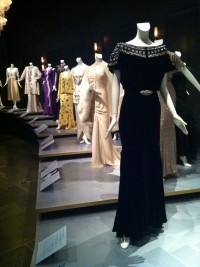
“After all these years, their allure still invites us to dream,” said Finamore and Stoehrer, who kept this dream alive by placing a large screen on the wall next to the platform of gowns that continuously plays clips of the movies in which the actresses wore the gowns on display. You can sit down on the small leather seat placed in front and see the designs from the screen come to life right in front of your eyes.
On the wall adjacent to it are frames of Banton’s design illustrations for Marlene Dietrich’s dresses from the movie “Desire,” Robert Usher’s production design drawing for the 1934 film “Limehouse Blues,” hand written letters from designer René Hubert and photographer Edward Steichen to actress Gloria Swanson, Mae West’s famous platform shoes, jewelry owned by Gloria Swanson, and Edward Steichen’s popular photographs of Marlene Dietrich and Gloria Swanson.
The exhibit will be ongoing and at the museum until March 8, 2015.



